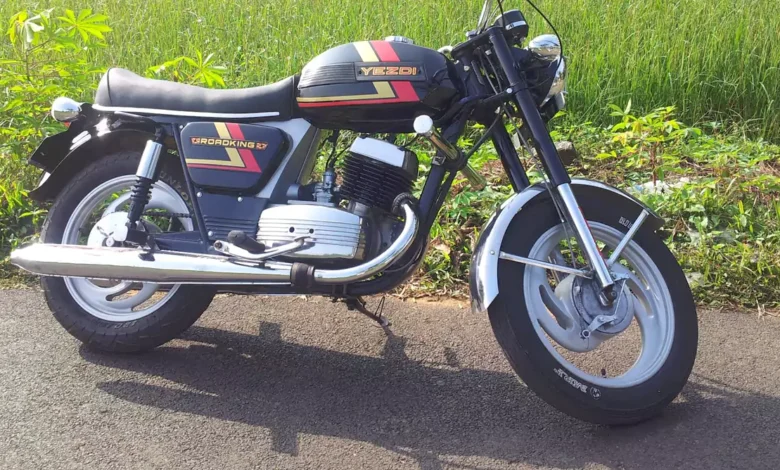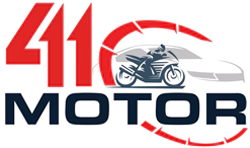The Forgotten Two-Wheeled Legends of India

India has always been a vibrant market for motorcycles, with a rich history of two-wheeled machines that have captured the hearts of enthusiasts. While brands like Royal Enfield, Bajaj, and Hero dominate the roads today, several motorcycles once roared with pride but have since faded into obscurity. Therefore, this article is written to relive some of these forgotten gems by highlighting their significance and giving an account of how they disappeared.
Yezdi Roadking
At Mysore-based Ideal Jawa (India) Ltd., Yezdi Roadking was a legend. It first entered the scene in the seventies and quickly carved out a niche for itself through its rough build, powerful 250cc engine, and unique sound system. This motorcycle won many rallyists’ hearts for its excellent handling and dependability.
The Roadking’s popularity notwithstanding, it succumbed to more stringent emission standards besides being overshadowed by newer Japanese motorbikes towards the late 1990s. In 1996 came Ideal Jawa’s closure, which marked the end of the Yezdi brand; however, among vintage motorbike collectors and fans who appreciate its sentimental value, Roadking remains a lasting testimony to those times.
Rajdoot 350
The Rajdoot 350, also known as the Yamaha RD350 in international markets, was a powerhouse of its time. It was introduced in the mid-1980s and had a displacement of 347cc which delivered excellent performance and high velocity with its two stroke engine. Consequently, this motorcycle had an unbeatable speed for an Indian road.
Nevertheless, Rajdoot 350 suffered from poor fuel economy and heavy maintenance costs, making it less attractive to the average Indian consumer. This declined after more economical and dependable four-stroke engines were built. By the beginning of the1990’sthe 1990s, the Rajdoot 350 had vanished from showrooms, but today, it is a prized collector’s item.
Lambretta and Vijay Super Scooters
Lambretta and Vijay Super were iconic scooters that dominated Indian roads in the sixties and seventies. These scooters, made by API (Automobile Products of India) and Scooters India Limited, respectively, were known for their strong bodywork and sleek looks. The Lambretta, with its origins from Italy, and the Vijay Super, which had Indian roots, became a sign of middle-class affluence.
The downfall of these two-wheelers actually began when cheap imported Japanese motorcycles started to stream into the country in the 1980s. These motorcycles were more pocket-friendly and fuel-efficient. Furthermore, Indian manufacturers never managed to catch up with new technologies. Nowadays, they are scarce, but they hold a special place in the hearts of those who grew up during their time.
Kinetic Honda
Kinetic Honda revolutionized the scooter market in the 1980s through its automatic transmission and easy handling. In India, it was one of the very first gearless scooters, making it a darling for urban commuters and women riders who used it to their advantage. The 98cc two-stroke engine offered an easy and smooth riding experience.
However, this initial success would soon be overshadowed by competition from newer models with improved features and more powerful four-stroke engines. Also, quality control problems at the company led to less consumer confidence. By the early 2000s, however, Kinetic Honda had vanished but is remembered as a pioneer in the automatic scooter segment.
Hero Puch
A moped that became quite popular in the late 1980s and early 1990s was the Hero Puch. It was made by Hero Motors and the Austrian firm Steyr-Daimler-Puch. It had a tiny 50cc engine that was incredibly fuel-efficient. Young riders and those who commuted daily found the Puch a sensible option because of its affordability and lightweight design.
The market for mopeds declined due to the emergence of motorbikes with greater power and the switch to engines with larger capacities. The introduction of electric scooters and shifts in consumer preferences also played a role in Hero Puch’s demise from the market. Nevertheless, for some who were captivated by its allure, it continues to evoke sentimental memories.
Bajaj Chetak
The Bajaj Chetak was more than simply a scooter—it represented Indian mobility like no other. It was named after the fabled horse of Maharana Pratap and debuted in the early 1970s. It was modelled after the traditional Vespa design. For millions of Indian families, the Chetak has become the standard for dependability and affordability.
The Bajaj Chetak started to lose popularity in the late 1990s as more people turned to motorbikes and more contemporary scooters. Bajaj eventually stopped producing its models in 2009 despite efforts to bring the brand back with more recent versions. Though the Chetak has recently returned as an electric scooter, the original model is still cherished as a part of India’s heritage of two-wheelers.
Royal Enfield Fantabulous
In the 1960s, Royal Enfield experimented with a scooter known as the Fantabulous before it became well-known for its Bullet series. The Fantabulous, with its 175cc Villiers engine and semi-automatic gearbox, was a distinctive hybrid of a scooter and a motorcycle. Despite its novel design, it did not succeed in the market.
Although the Fantabulous was revolutionary for its day, its pricey and unusual design turned off many people. Royal Enfield quickly withdrew the model, choosing to concentrate on its more popular motorbike portfolio. The Fantabulous, a daring but ultimately futile attempt at innovation, is now a rare collector’s item.
